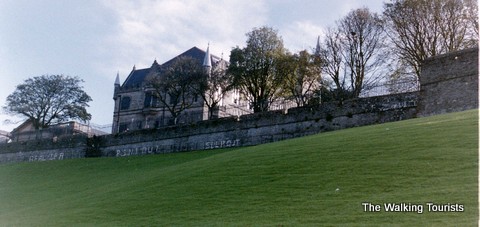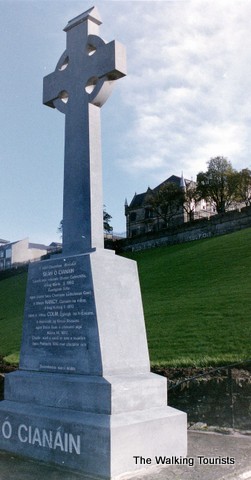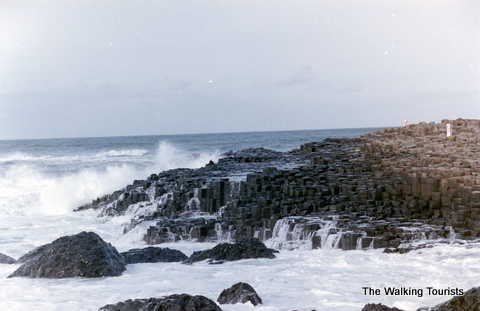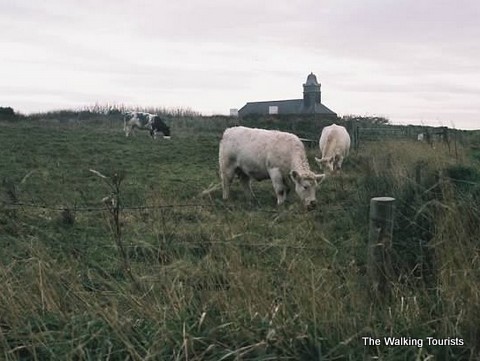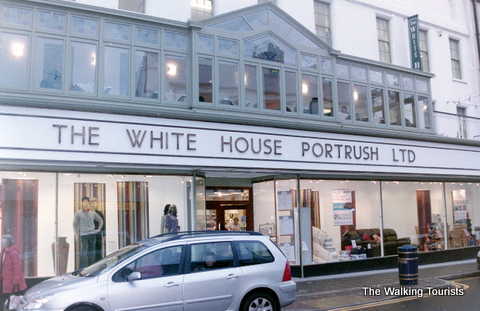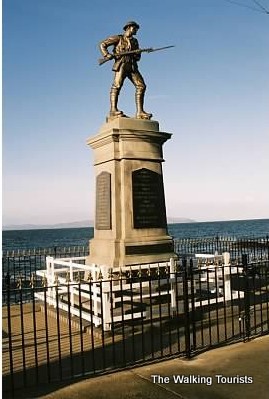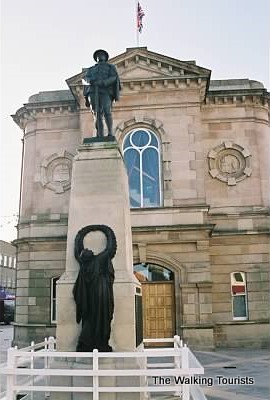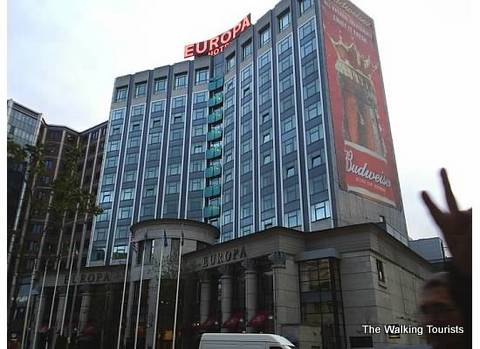That time we traveled to Northern Ireland

Everyone is Irish on March 17th, right? Isn’t that how the saying goes when St. Patrick’s Day rolls around each year?
We had the privilege of traveling to the Emerald Isle a few years ago when our youngest daughter studied abroad for a semester. She attended the University of Ulster in Coleraine. Coleraine is a smaller city about 45 minutes outside Belfast.
When Mallory told me her application to study in Ireland was approved, I was excited for her. When she told me it was Northern Ireland, I went from excitement to fear. The Northern Ireland I grew up with was the site of bombings and killings as the Irish Republican Army committed terroristic acts against the British Army units assigned to “keep” the peace.
Well, politicians negotiated a successful peace settlement. The British had all but moved out of Northern Ireland. So, my fears were allayed.
Mallory loved studying there and being among the Irish. Since both sides of her parents’ families have strong Irish ancestries, it seemed like a perfect spot for her to study. Lisa and I visited for two weeks and had a wonderful time.
Since Mallory was in school during the day, Lisa and I did some local touring ourselves. When Mallory was able to hang out with us, we took in sites together. We had a great family weekend road trip to Dublin during our visit.
The area near Coleraine had so much to see – Giant’s Causeway, Old Bushmills Distillery, Portstewart and Portrush coastal towns.
One of our favorite stops was Derry (Londonderry, if you were a British supporter). Since the locals called the second largest city in Northern Ireland Derry, that’s what we went with.
Derry has quite a history. The walled city was founded in 1613. Part of the walled city remains. It’s more a tourist attraction these days (natural wanna be site for me to visit). The original spot of the city offers a look of the River Foyle and the city. Cannons are on display during the walk.
The city may be best known in the song “Sunday, Bloody Sunday,” by the Irish band U2. Derry was the site of two major civil rights incidents between Catholics and (British) Unionist supporters. In 1969, a fight between the groups is considered the first struggle in what became known as “The Troubles.” This was the name given to the IRA-British loyalists fight.
On Sunday, Jan. 30, 1972, 13 people were killed by the British, and another 13 were wounded. This became known as “Bloody Sunday.”
A housing area a few feet away from the Walled City honors the fallen and wounded with a memorial.
Buildings have murals painted on the sides highlighting the IRA-led struggles. “You are now entering Free Derry” advises visitors of their location.
One thing we noticed in Derry and Limavady (where we stayed) was that people showed their allegiances by painting the curb in front of their homes. Red, white and blue (British Union Jack flag colors) and Orange, white and green (Ireland’s flag’s colors) show the loyalties.
Near the city square, statues recognize Irish emigration.
Our first trip in Northern Ireland was to Giant’s Causeway with Mallory. The column-shaped rock formation was created by volcanic eruptions.
Folklore says the causeway was once a bridge that connected Northern Ireland to Scotland. A giant from Northern Ireland crossed over to Scotland. He encountered another giant from Scotland. The two fought and the Irish giant headed home. The Scot followed to finish the deed. Once home, the Irish giant and his wife came up with a plan to scare off the Scot giant. When the Scot came across, he demanded to see the Irish giant. Instead, the wife had him catch a glimpse of the “baby,” who was as big as the father already. The Scot ran off, breaking the bridge apart as he went. The “baby” turned out to be the giant.
Giant’s Causeway was a fun place to go. You can walk out on the rocks, getting fairly close to the ocean. I don’t care to drown in the ocean, so I didn’t go as far out as some visitors did.
Lisa and I went back one day while Mallory was in class. We climbed a long set of steps and walked along the bluffs overlooking the causeway and water. It was a windy day. When we stopped at the visitors center on our way out, we saw a sign warning people not to climb the stairs and go along the bluffs due to the wind. Our bad!
Lisa had her first sip of whiskey during the visit to Old Bushmills Distillery. The distillery is more than 400 years old. All Bushmills whiskey products are produced there.
The distillery tour gives visitors a look at the whiskey’s history, how it’s brewed and stored. The final stop is at the tasting room. One “lucky” visitor gets to try five shots of different products. Mallory tried a straight shot for her drink. Lisa had a hot tottie. I had a Diet Coke (hey, I was the designated driver).
On our drive to Bushmills, we stopped at Dunluce Castle, near Portrush. The first castle was built in the 13th century. The current castle was partially destroyed when a portion of it collapsed into the sea waters below the steep cliffs in the mid-1600s.
Today, visitors can roam through the mainly open areas of the castle. A stairway does allow visitors to climb down near the water. It’s not the most fun climb back up, though.
It was impressive to see a castle that has existed for 400 years.
Portrush was a nice village a few kilometers from Coleraine. The storefronts downtown along the water created a beautiful view to us.
Portstewart seemed to offer a little more tourist viewing for us. We checked out a maritime memorial, as well as a military memorial.
Since Coleraine was the base of operations for our visit, we enjoyed checking out the area. The city has a population of about 25,000, so it had a nice small town feel to it.
The town square was always an interesting place to be – shops, architecture and people watching.
An Amnesty International office is prominently situated in the square.
An old church is located on one end of the square.
A military monument honors the people who fought and died during World War I.
A city park has a water fountain designed like Giant’s Causeway. Each column has the name of a town in County Londonderry listed.
Limavady is a small town about 10 km from Coleraine. At the time of our visit, Lisa worked for a hotel company and they had a 5-star resort located near town, so we stayed there. We would walk into town, which was about half a mile. Some of the buildings had been constructed in the early 1600s. You don’t see that in the United States, except maybe for the New England area.
We had a great day in Belfast near the end of our trip.
We took in the view of Belfast’s city hall. It looks old, but is actually a young building when compared to some we visited. The city hall opened in 1906.
The Crown Saloon had a dark wood appearance. It has a mosaic of a crown in the floor.
The Belfast Opera House was a nice view on a tour of the city we took.
The Hotel Europa was the site of several bombings during “The Troubles.”
We jumped at the chance to take a bus tour of the city. The three of us got some great views and history lesson. The tour guide didn’t back off talking about the war between the IRA and the British. We toured neighborhoods that had walls and fences between them. Protestants lived in one area and Catholics lived in another.
Buildings and walls had several murals that contained political statements.
On a light note, we had lunch at the Titanic Café, which was near the shipping yards where the doomed boat was built. Mallory noticed that the restaurant didn’t serve iceberg lettuce in its salads. Get it?
We enjoyed our trip to Northern Ireland. The time flew by so quickly. We’d love to go back. This time, though, I would plan a two-week driving tour to visit the entire island – both Northern Ireland and Ireland. The time we spent in Dublin was short.







